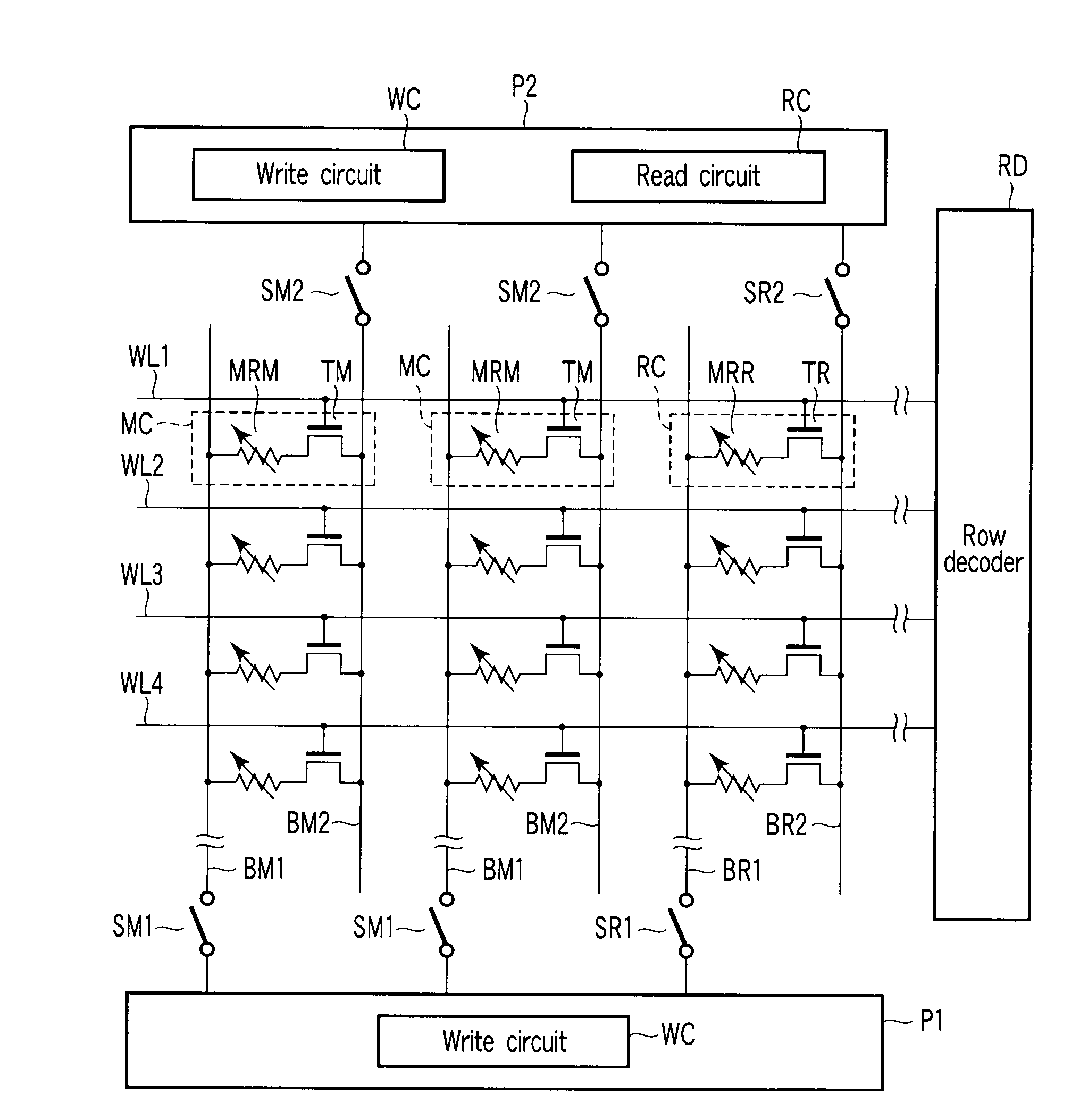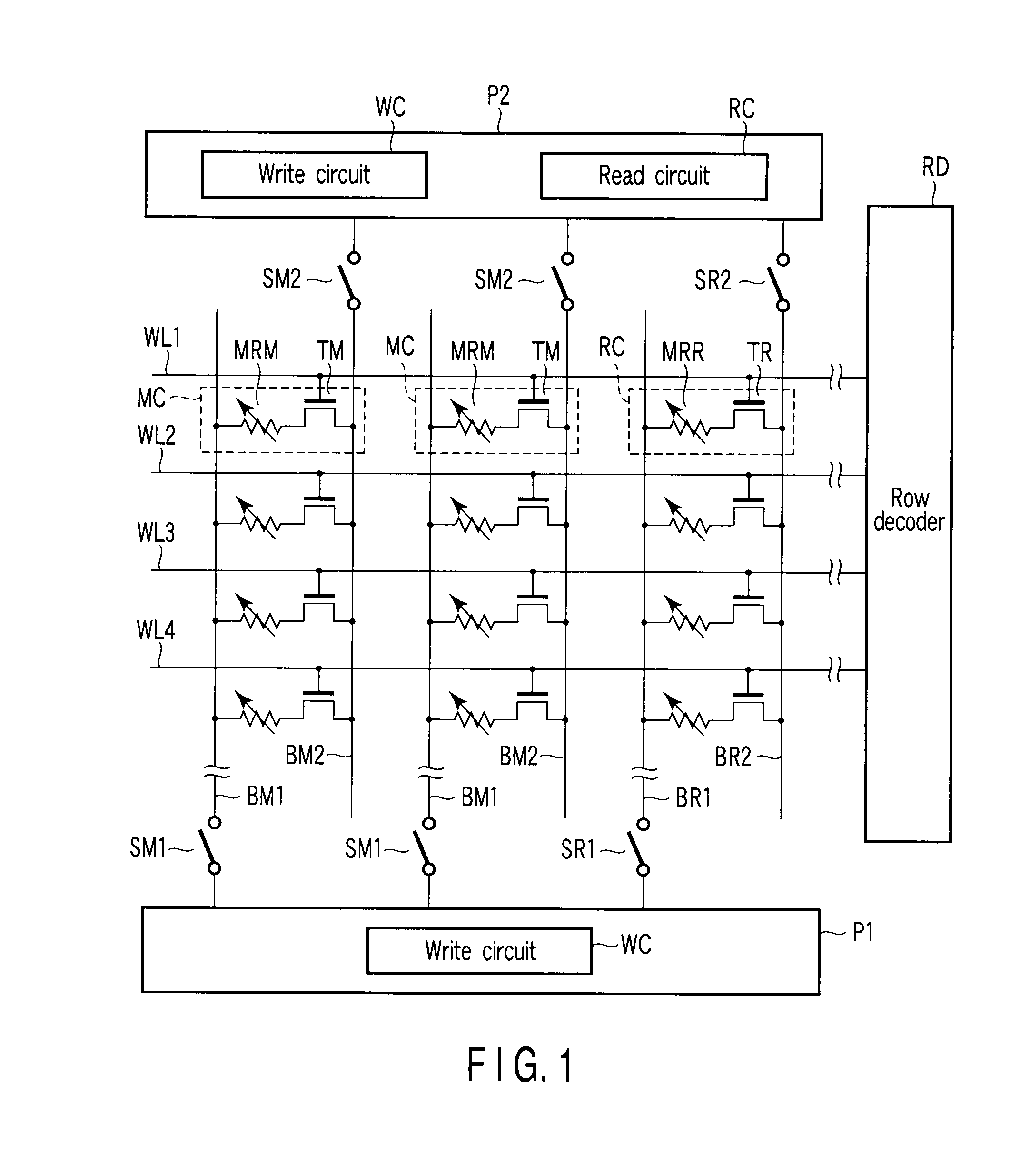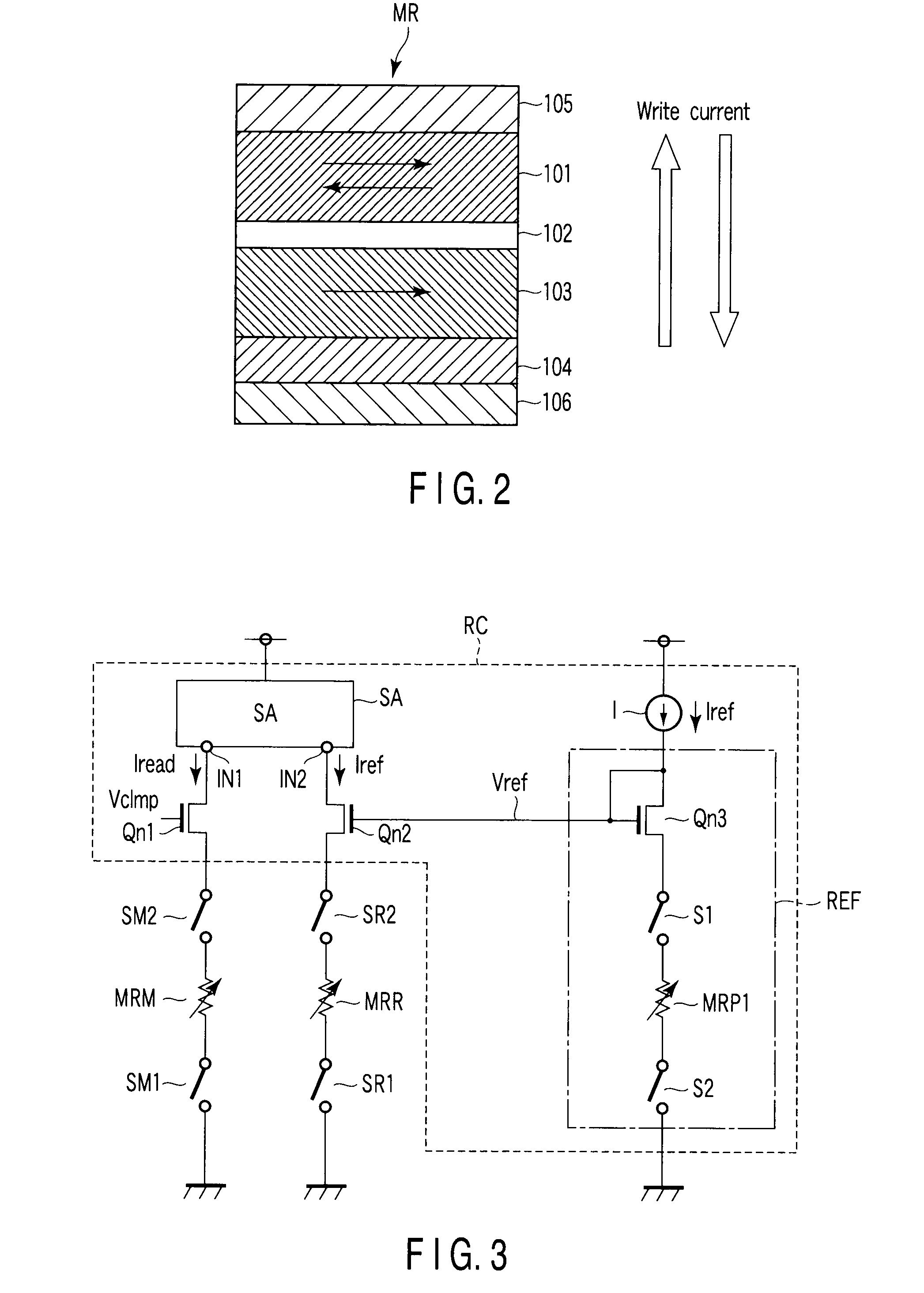Magnetoresistive random access memory
a random access and memory technology, applied in the field of magnetic random access memory, can solve the problems of increasing the power consumption of mram and the small area available for providing memory cells, and achieve the effect of low resistance state and high resistance sta
- Summary
- Abstract
- Description
- Claims
- Application Information
AI Technical Summary
Benefits of technology
Problems solved by technology
Method used
Image
Examples
first embodiment
[0021]With reference to FIGS. 1 to 3, the magnetoresistive random access memory according to the first embodiment of the present invention is explained. FIG. 1 is a circuit diagram schematically showing main parts of the magnetoresistive random access memory according to the first embodiment. As shown inFIG. 1, memory cells MC and reference cells RC are arranged in a matrix. The memory cell MC consists of a magnetoresistive effect (MR) element MRM and a select transistor TM that are connected in series. The reference cell RC consists of a MR element MRR and a select transistor TR that are connected in series. Select transistors TM and TR consist of, for example, n-type metal oxide semiconductor field effect transistor (MOSFET).
[0022]MR elements MRM and MRR can take at least two stationary states in accordance with its internal magnetization state. More specifically, MR elements MRM and MRR are designed to take a low resistance state or a high resistance state when flow of spin-polar...
second embodiment
[0059]The second embodiment concerns the connection between transistors Qn2 and Qn3. FIG. 4 is a circuit diagram schematically showing main parts of the magnetoresistive random access memory according to the second embodiment of the present invention. As shown in FIG. 4, in read circuit RC, the potential of the gate terminal of transistor Qn3 is transmitted to the gate terminal of transistor Qn2 through a unity gain buffer.
[0060]Specifically, the gate terminal of transistor Qn3 is connected to the non-reversed input terminal of an operational amplifier OP. The output terminal of operational amplifier OP is connected to the gate terminal of transistor Qn2 and its own reversed input terminal. Even if transistors Qn2 and QN3 are connected in this way, gate terminals of transistor Qn2 and Qn3 can have the same potential. The remaining parts are the same as the first embodiment.
[0061]Connecting gate terminals of transistor Qn2 and QN3 through operational amplifier OP can charge the gate ...
third embodiment
[0064]The third embodiment concerns the example of constant current circuit I of first and second embodiments.
[0065]FIG. 5 is a circuit diagram schematically showing main parts of read circuit RC of the magnetoresistive random access memory according to the third embodiment of the present invention. Constant current circuit I has the configuration shown in FIG. 5.
[0066]As shown in FIG. 5, in constant current circuit I, p-type MOSFET Qp1, an n-type MOSFET Qn11, and a replica MR element MRP2 are serially connected. The serially-connected structure is connected between the power supply potential end and the common potential end. The gate terminal of transistor Qp1 is connected to the drain terminal thereof. Clamp potential Vclmp is supplied to the gate terminal of transistor Qn11.
[0067]In constant current circuit I, a p-type MOSFET Qp2, an n-type MOSFET Qn13, and a replica MR element MRP3 are serially connected. The serially-connected structure is connected between the power supply pot...
PUM
 Login to View More
Login to View More Abstract
Description
Claims
Application Information
 Login to View More
Login to View More - R&D
- Intellectual Property
- Life Sciences
- Materials
- Tech Scout
- Unparalleled Data Quality
- Higher Quality Content
- 60% Fewer Hallucinations
Browse by: Latest US Patents, China's latest patents, Technical Efficacy Thesaurus, Application Domain, Technology Topic, Popular Technical Reports.
© 2025 PatSnap. All rights reserved.Legal|Privacy policy|Modern Slavery Act Transparency Statement|Sitemap|About US| Contact US: help@patsnap.com



